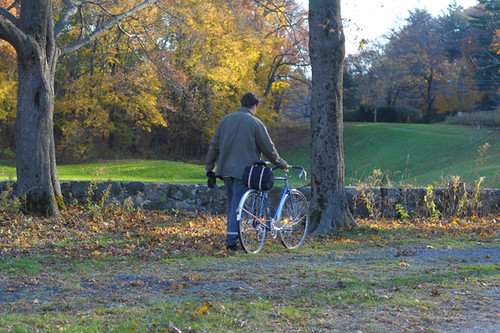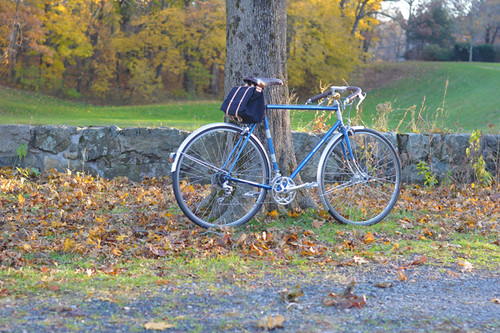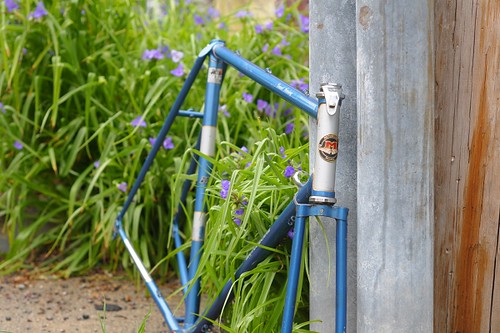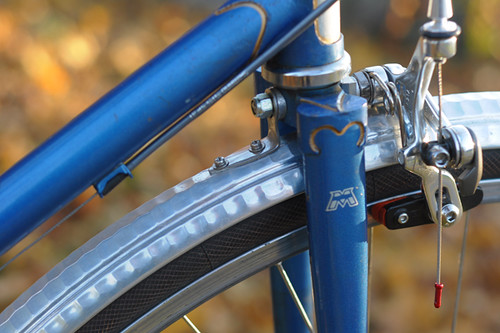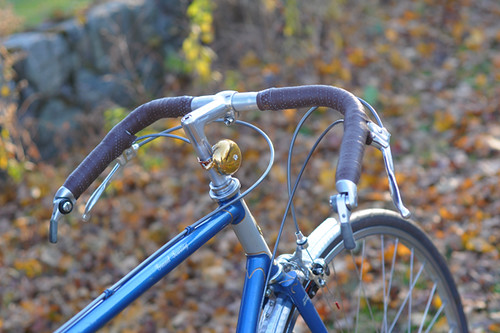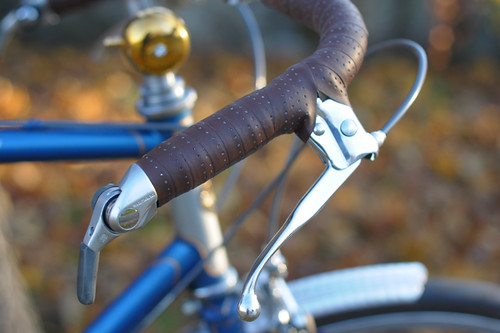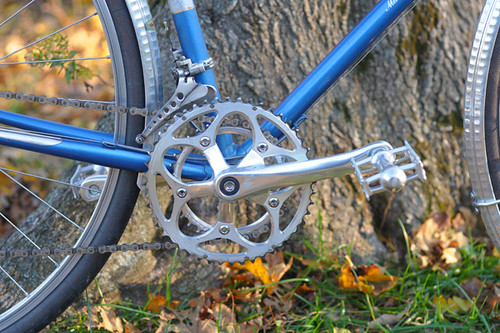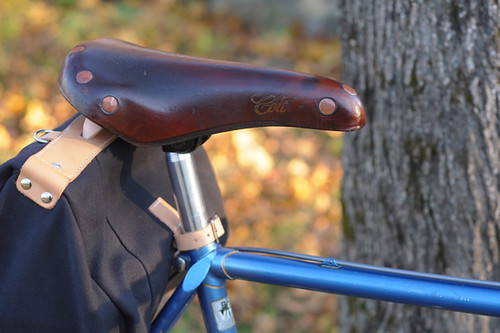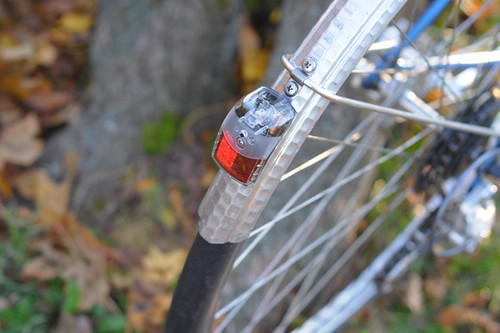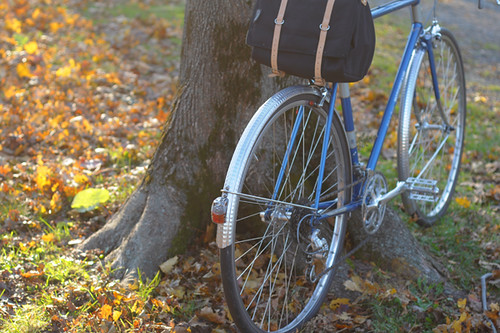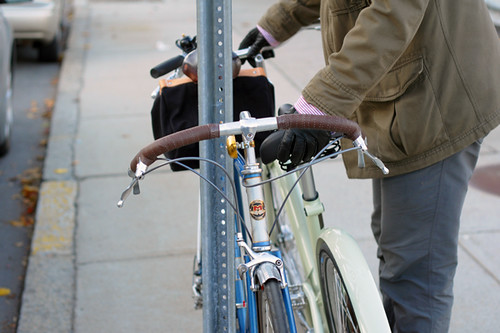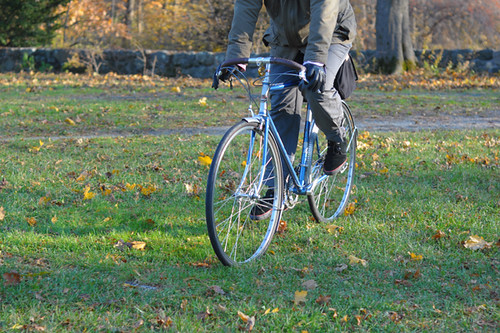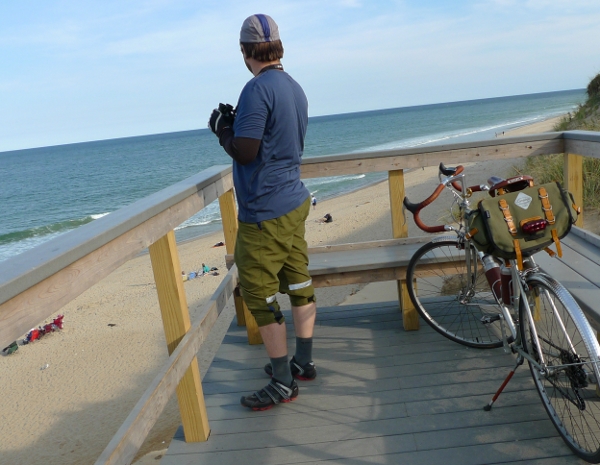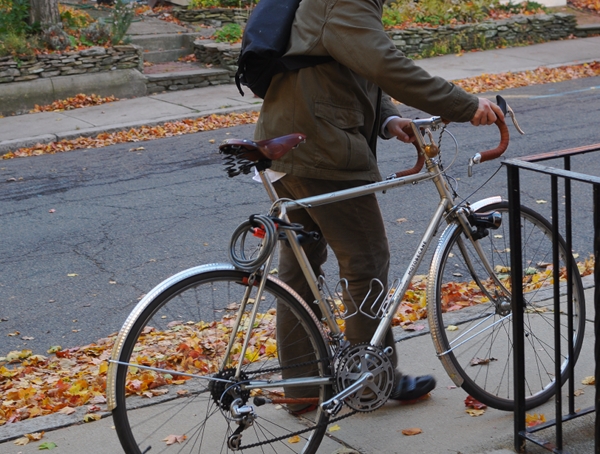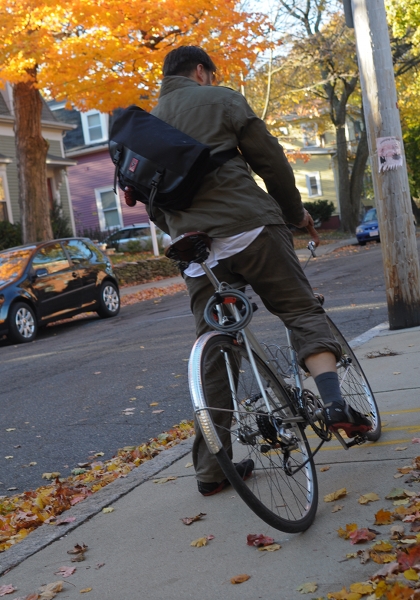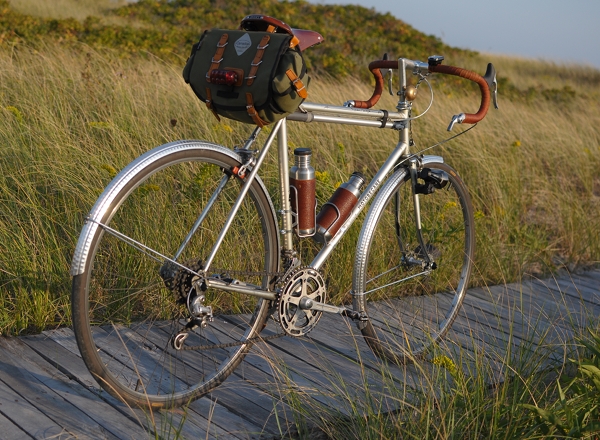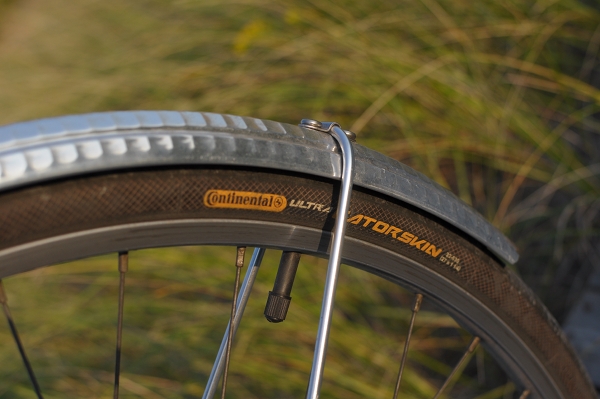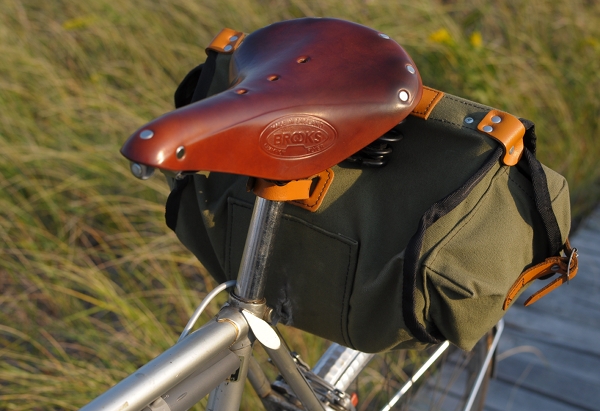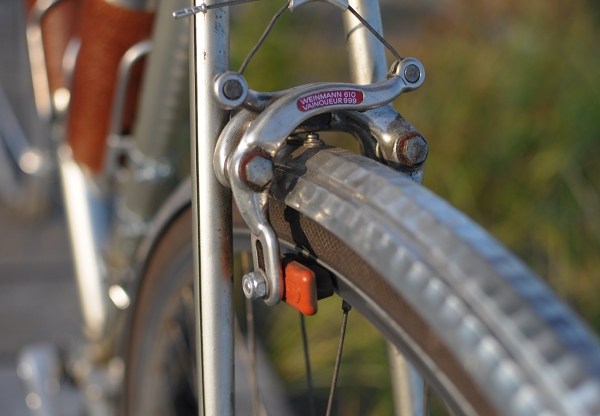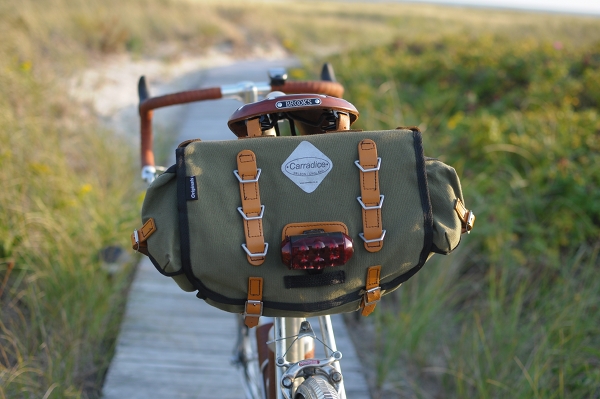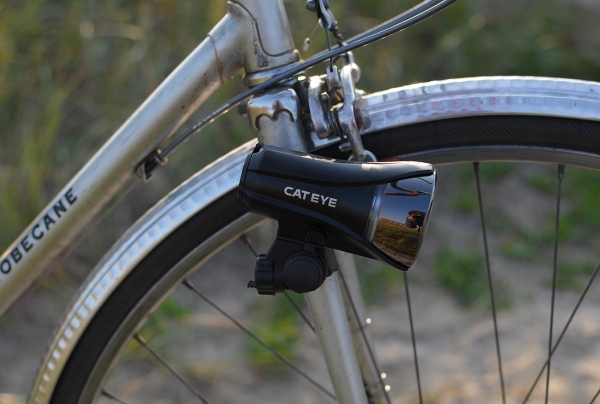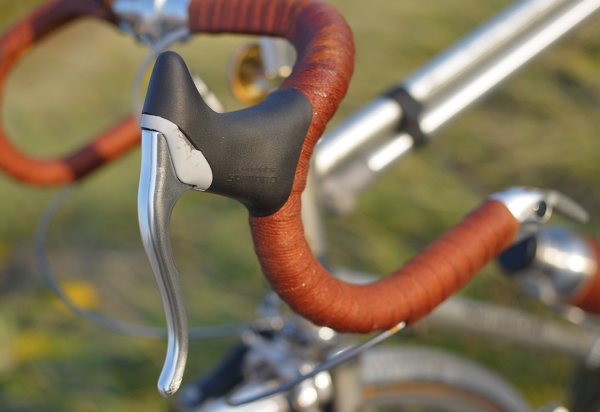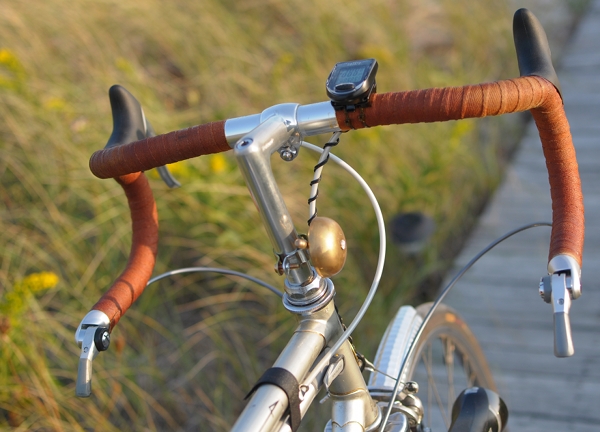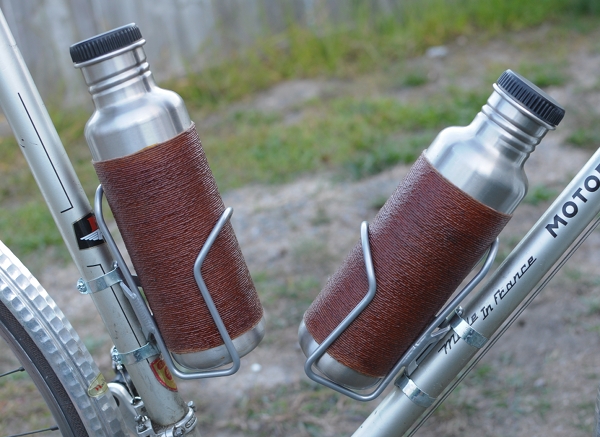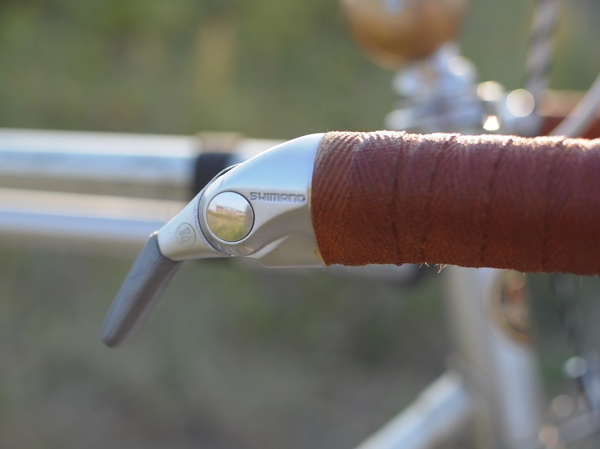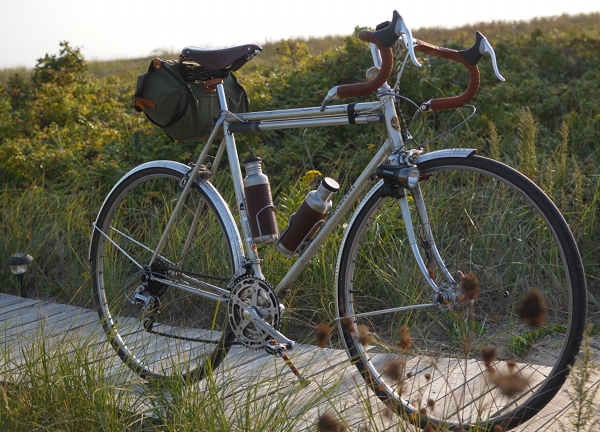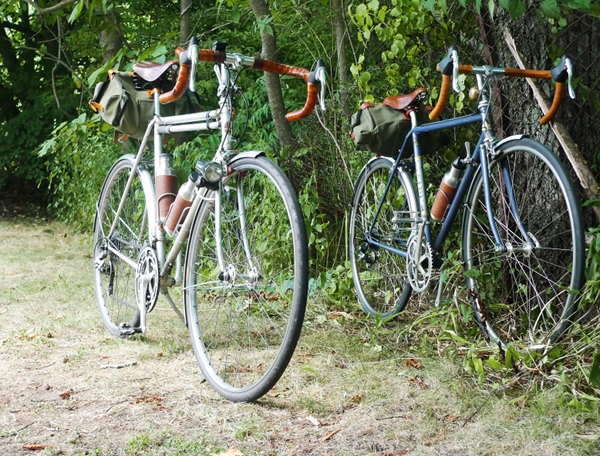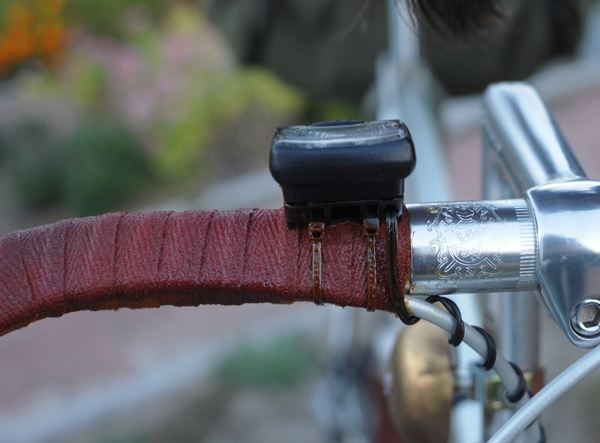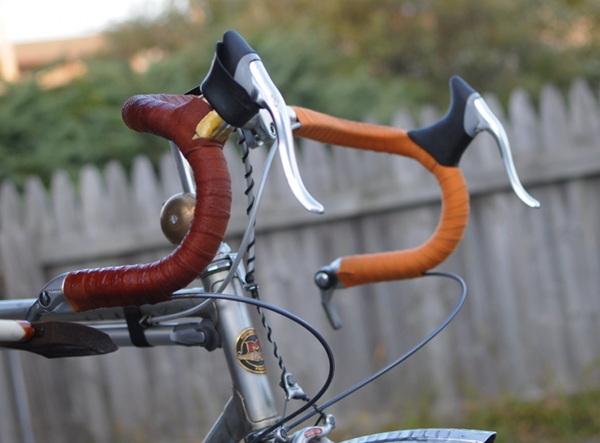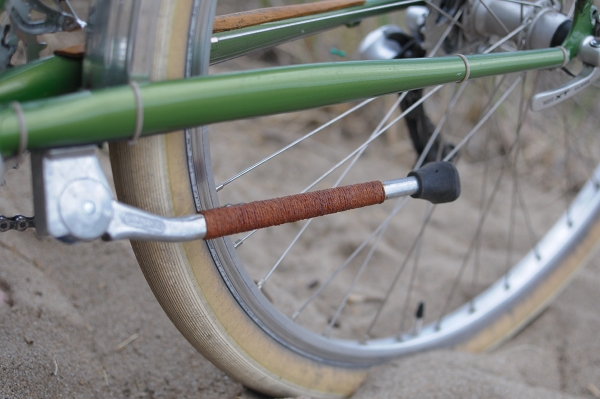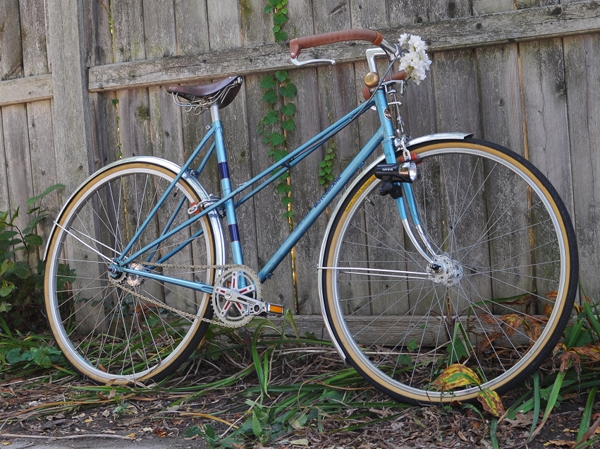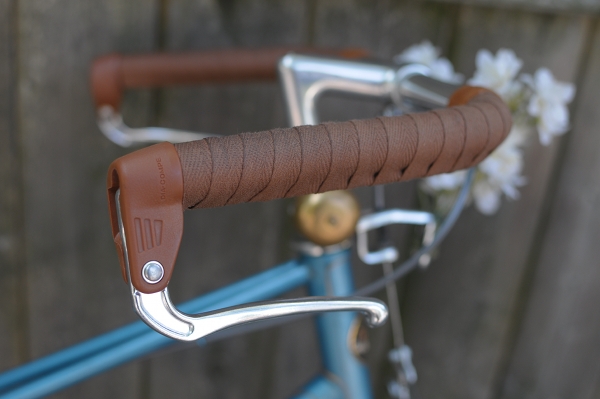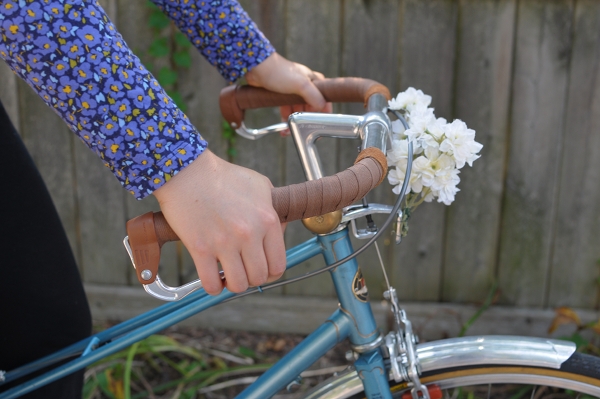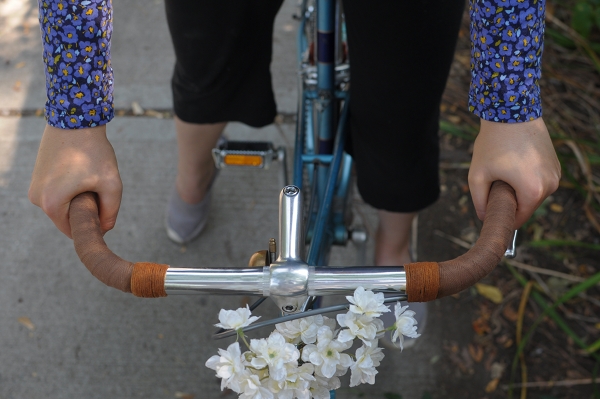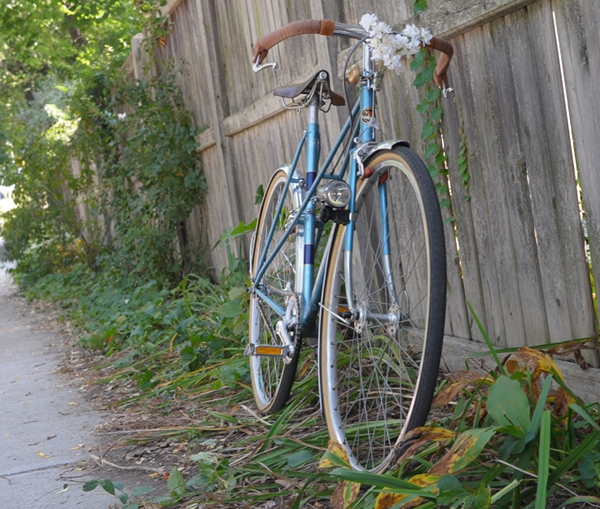The Co-Habitant has been riding his Motobecane redux creation for the past month, and as far as what he was looking for it is a mission accomplished: The bike is nice enough to enjoy riding, but not so nice that he is unwilling to leave it locked up in the city.
This project started out as a game of sorts, where the idea was to build up a complete bike using only parts we already had.
The frame is a Motobecane Grand Touring that an acquaintance gave the Co-Habitant a year ago. Made of Vitus 888 tubing, it is nicer than the Super Mirage model of his former roadbike. Being a touring frame, it is also somewhat more relaxed, so it made sense to build it up as a transportation bicycle.
Many of the components were moved over from the other Motobecane frame.
Others had been acquired in the past, waiting for the right project. It was particularly nice to finally have occasion to use these original Belleri handlebars. Surprisingly, they fit bar-end shifters. The combination looks eccentric, but it's convenient. The stem could be longer, but this one was already filed down to accommodate the French sizing, and we did not want to ruin another one.
Fizik handlebar tape, in brown. The only exception to the "must already own it" rule, I bought this in Vienna (the brown and honey colours are not sold int he US). "City" brake levers from Velo Orange - these are very convincingly "vintagey."
The least vintagey part of the bike is the Sugino Alpina crankset. We figure that the out of place crankset and bar-ends lend a sense of humor to a bike that may otherwise have come across as too perfectly French. This way it feels more approachable.
Speaking of approachable, initially we were not sure whether this vintage Brooks Colt I'd acquired some time ago could ever be made ridable, as it had a nasty ridge along the center. I'd tried the "blocking" (water soaking) method, but the ridge persisted. However, the Co-Habitant managed to flattened it after a couple of rides on the water-softened leather and reports that it is now quite comfortable.
He mounted a Spanniga Pixeo tail light on the rear fender, and uses a removable CayEye headlight on the handlebars.
In the future there might be a rear rack in this bicycle's future, but for now it sports a roomy (but rather inconvenient to open and close) Minnehaha saddlebag.
I have to say that I am thoroughly enjoying the existance of this bicycle: Finally we can go out and leave our bikes locked up in the city for hours, without the Co-Habitant constantly worrying about his. It is by no means a "beater," but it is sufficiently unprecious for him to relax about its fate.
An additional benefit of having built up this bike, is that it showed us how different two models from the same manufacturer and vintage could be. This Grand Touring frame is exactly the same size as his former Super Mirage, but the front wheel on this bike is considerably "further out" - probably a combination of a more relaxed headtube angle and more fork rake. Unfortunately, he no longer has the other frame to compare exact measurements or to photograph them side-by-side. And while he expected for a bike with Vitus 888 tubing to feel nicer than a hi-ten bike, the difference between the two (with the same wheelset and tires) still managed to surprise him. The ride is considerably cushier and the bicycle is much lighter in weight (26lb with the build shown, not including the saddlebag). Having ridden this bike myself and enjoyed it a lot more than any other '70s-80s Motobecane bike I'd tried earlier, I am now curious to try the mixte version. A number of readers have written me about being disappointed with the ride quality of the vintage French bikes that one typically finds for sale in the US, so this might be a good model to look for. More pictures of this bicycle here, for anyone interested.
